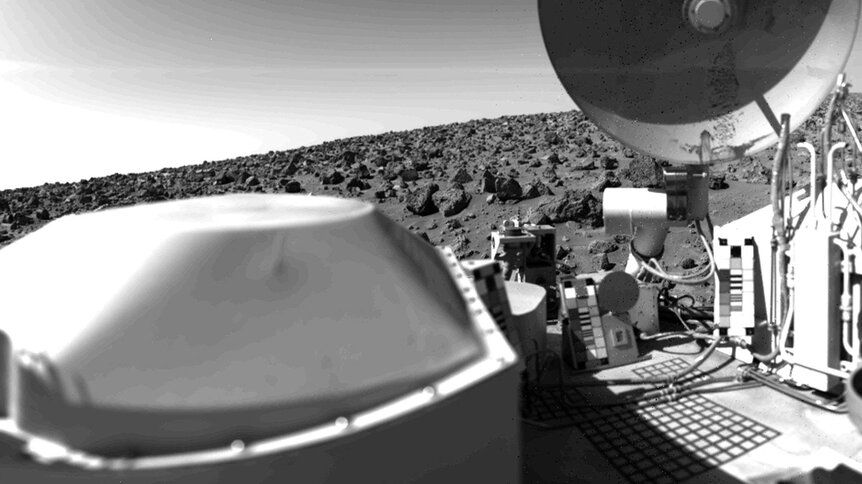Create a free profile to get unlimited access to exclusive videos, sweepstakes, and more!
Is it really alive? New method could help us detect life as we don’t know it on alien planets

Every time organic molecules are found somewhere beyond Earth, the internet explodes with #aliens — but we might have gotten the search all wrong.
Unearthing life on a distant planet may be more about the patterns molecules create from different functions rather than just the molecules themselves. Now a team of researchers from the Earth-Life Science Institute (ELSI) at the Tokyo Institute of Technology in Japan and the National High Magnetic Field Laboratory in the US could have astrobiologists and other scientists rethinking aliens after testing out this theory with a machine learning system. Where AI and aliens intersect is not nearly as cinematic as it is in the movies, but far more fascinating.
We have always leaned heavily on life as we know it to help us identify anything that might be crawling out there. Nicholas Guttenberg, who led a study recently published a study in Life, believes that the processes that create and are created by behind organisms on Earth could potentially guide us to life as we never imagined it.
“If we want to understand how life could come about chemically, we have to start to identify the differences between mixtures and relate those differences to the chemical processes that lead to them,” Guttenberg told SYFY WIRE. “If we can still see things and tell things apart, it supports the idea that there's broad information contained in the relationships between molecules rather than just individual ones.”
Since the Viking 2 lander beamed back suspicious results from Mars in 1976 — supposed signs of aliens until it was eventually disproved — the search has been on. Organics are showing up in atmospheres millions and even billions of light years away. Bodies in the habitable zones of their stars are being singled out as possible breeding grounds for life, NASA is sending missions moons in our own solar system because of their subsurface oceans, and Mars still remains on the short list of planets that may have at least once spawned microbes, if nothing else. Mass spectrometry that can identify organics is now being looked at differently than it was during the Viking era.
This is not to say that the method of mass spectrometry in itself is an inaccurate method of seeking the signs of life, but how it has been used. Those strange results from the second NASA spacecraft to ever land on Mars are now thought to be the result of analyzing the characteristics of individual organic molecules in a compound. This is why Guttenberg and his team instead decided to investigate the patterns formed by molecules, which give organics produced by living things and abiological processes different fingerprints. It is these fingerprints that could finally detect aliens in the future.
“The hope is that there will be more distinct fingerprints than just the broad categories we have now, so that we can tell the difference between things which are there to act as electron transport chains, things which build homogeneous or inhomogeneous polymers, chemical processes that recognize shape and act with high specificity versus ones that act more generically, and others,” he said.
Guttenberg believes that the most changes in biological fingerprints, and the most rapid ones, happen when life originates. This is the phase during which elements and molecules are building up and constantly restructuring based on what environmental conditions that a proto-life-form may have to face. Evidence of a similar pattern of changes could be one fingerprint to give away the existence of molecules produced by something that is alive. Abiological processes could also be separated from those that are biological depending on how molecules react to each other and what shape those reactions take. There could be certain fingerprints that show evidence of compounds being synthesized by processes that we already know are part of life, such as metabolism.
Though the researchers were not able to investigate every possible scenario, they simplified their mass spectrometry data to bring it closer to what a spacecraft would send to Earth, then fed it to a machine learning algorithm which then classified each example as biological or abiological. The computer brain did this with an astounding 95 percent accuracy. Why it was so accurate is not exactly clear, but several years of upgrades could mean a breakthrough. When the samples Perseverance is digging for are finally returned to Earth, it could be that there are two made of almost identical organics—but a closer analysis of those organics reveals that they were processed in completely different ways.
Maybe a sample of Martian regolith that seems lifeless will reveal a process that only happens in or is carried out by living organisms. While the same pattern in separate specimens may not automatically mean the same function, if patterns that continue to prove the existence of life are found again and again in the lab, any discovery of these same patterns found in extraterrestrial material may actually break the internet someday.
“If this idea continues to prove itself,” said Guttenberg, “Then we might be able to identify chemical systems by the types of functions present — what that system 'is doing', rather than what the system 'is made of' — and that might help us generalize a bit further from the single biosphere that we have access to.”
So hold off on the #aliens hashtag just a little while longer.















